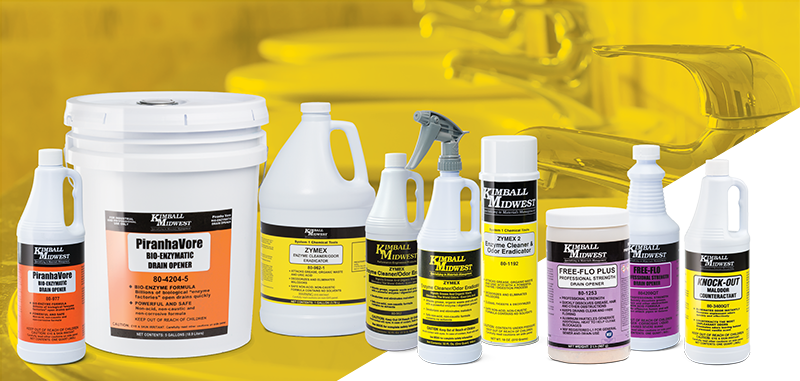Most people don’t think about drains until they cause problems. Over time, drains can accumulate buildup that can slow drainage or stop it altogether. Clogged drains can cause serious backup, creating a big mess you need to clean up. Regularly cleaning and maintaining your drains keeps them functioning well.
Preventative drain maintenance offers several benefits:
- It controls odors and buildup.
- It prevents backups.
- It reduces the need for grease trap cleaning.
- It saves money by reducing labor and downtime.
- It helps reduce the likelihood of costly plumbing emergencies.
- It extends the life of your drains, pipes and fixtures.
Following the tips below can help you save a lot of time, money and stress.
1. Identify Problem Areas
Keep a list of all the sink drains, garbage disposals, grease traps, ejector pits, laundry lines, HVAC ducts, toilets/urinals, drinking fountains and other units that require regular maintenance. This ensures you don’t overlook anything that may back up, leak or otherwise cause problems if not properly maintained.
2. Regular Maintenance
Clean and deodorize your drains on a weekly basis to control odors and prevent buildup. Not only does this prevent clogs, but you will eliminate the organic matter in your drains that attracts drain flies and drain mites. These insects quickly reproduce and can cause an infestation, adding pest control to your list of headaches.
There are a variety of products on the market you can use to maintain your drains, but many have corrosive, caustic or acidic ingredients that can damage your pipes over time, not to mention the effect they may have on your health and the environment. For example, lye is a common ingredient in many store-bought drain cleaners, but it isn’t safe in large amounts. Depending on the product, you may need disposable gloves and safety glasses to protect your skin and eyes.
Look for a bio-enzymatic formula instead. These are safe and effective for all plumbing systems, including drains, wastewater systems, grease traps, septic systems, sump pumps, toilets and urinals. They do not contain harsh chemicals, so they are much safer for the environment and your health. It’s especially important to choose safe products if you work in food service, medical facilities, hotels, schools and other environments that cater to large populations.
Prevent slow drainage and full blockages by using a drain opener, such as Free-Flo or PiranhaVore™, on a weekly basis. These products are designed to dissolve organic matter such as hair, soap scum and grease without damaging pipes or fixtures, plus they can be used in a variety of applications including grease traps. These products also work through standing water.
Products like Zymex and Knock-Out™ can also be used to clean and deodorize your drains safely and effectively.

3. Limit What Goes Into Your Drains
Be mindful of what is poured down your drains and flushed down toilets. Use drain catchers, if possible, to prevent solids such as hair and food particles from getting into your drains. Just be sure to clear the drain catchers frequently.
- Only pour non-reactive liquids down your drains.
- Avoid putting any fibrous food scraps (potato peels, corn husks, asparagus, etc.), grease, oils, coffee grounds, egg shells, pasta or rice down garbage disposals.
- Only flush human waste and toilet paper down the toilet.
4. Accessible Plungers
Keep tools on hand to deal with clogs. You should have a plunger at the very least; it will likely take care of most clogs. A closet auger or plumber’s snake can handle tougher jobs if a plunger isn’t effective.
5. Fix Leaks Fast
Don’t stop with drains. Regularly inspect your faucets, exposed pipes and appliances for any signs of leaks. Dripping faucets not only waste water, they can get worse over time and become an even larger drain on your time and money. The problem may be an easy fix if you catch it early.
Leaky pipes can cause serious problems like mold or mildew, water stains or damage from puddling, which can add up to significant downtime and expense. Whenever possible, use a drain pan under appliances to protect the surrounding area from standing water damage in case of a leak.
.png?width=131&height=58&name=image%20(40).png)

